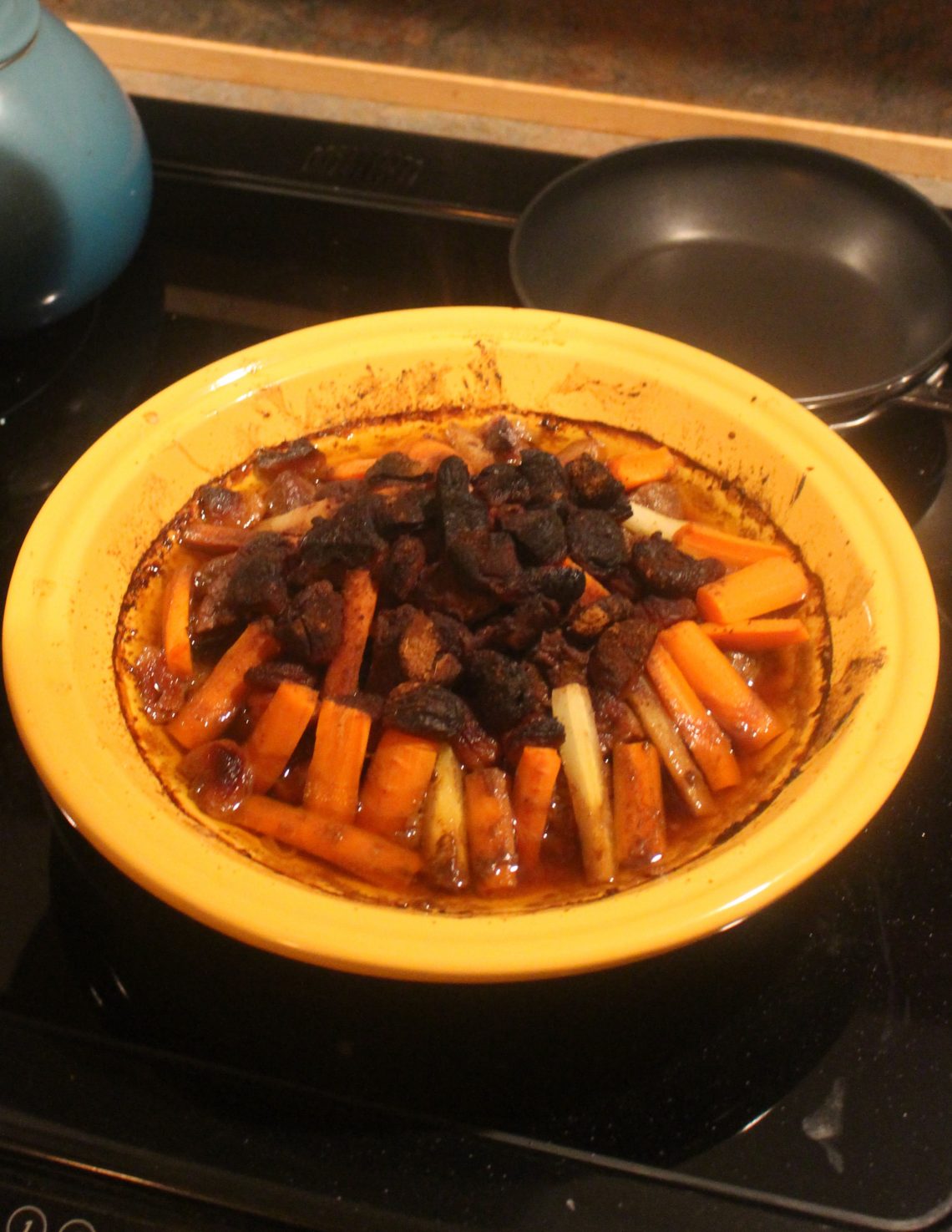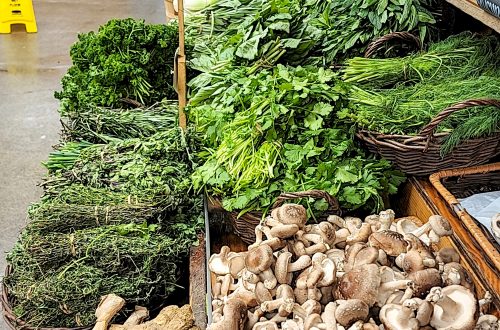
Welcome to Comfort Food Season
Tis the season for something substantial. The cool temps at night means that most diners are not in the mood for a salad. Nature agrees. The summer birds have headed south, and the leaves are beginning to turn. One advantage to staying at home is that we have had the time and place to notice and be attuned to the life around us.
Back in the farm belt, they’re starting the fall harvest, first soybeans and then corn. Wherever you are, just look around outside. Some of the wild creatures are putting on winter weight, and their coats are growing thicker. We’re all paying more attention to what we eat. And, if you pay close attention, your body may even be telling you it’s time to add some winter weight before hibernation.
As for me, I’m hankering for a stew, one of mankind’s oldest dishes. Ancient hunter-gatherers would collect whatever the tribe managed to gather – meat, root vegetables, maybe some fruit and grains – and for flavor and aroma, whatever local herbs the cooks favored. As the food cooked, it was a time to tell stories around the fire until the stew was ready.
Regional stews
Every country and every region, it seems, has its favored stew. Dutch peasants made hachee as a way to use leftover vegetables and meat. To sustain themselves while herding cattle, Mexican cowboys made frijoles charros from beans, onions, tomatoes, chilies, coriander, and either bacon, ham, or salt pork. In Ethiopia, women were judged on their proficiency at cooking wat, made with lentils, vegetables, and meat and seasoned with berbere, a spice blend. One of my favorites is tagine from Morocco (pictured). Serbian comfort food is pasjuli, a white bean soup simmered with sausage, bacon, or ham with carrots and onions. And the French, being French, cook up pot au feu, boeuf Bourguignon, and coq au vin to make good use of wine.
Those same combinations and aromas likely appeal to us, especially this time of year. Don’t be tempted by going to a gooey mac and cheese casserole just because it’s easy and filling. Go ahead and add some pasta to your stew, but by all means, make good use of the late summer vegetables that are still available: tomatoes, squash, eggplant, cabbage, and spinach. How about a ratatouille?
Your own composition
But why not become a trend-setter and originate your own signature comfort dish? After all, a stew is just a mélange of ingredients – usually vegetables and meat – cooked in water or broth so that the meat gets tender and juicy and the flavors can mingle. Before you load up your pantry, why not explore and take an inventory of what you already have? That meat that’s been at the back of the freezer for a while. The last vegetables from the garden or the weird-shaped ones from your local community-supported agriculture (CSA).
Even if you already have your own favorite stew, why not break out of the mold and try a different meat, some oddball vegetables, or pasta from that partially used box? I’m favoring beans lately, and I have five different varieties from Rancho Gordo, a source of quality heirloom beans in Napa, California. Soak them in water, then put them in an Instant Pot for about 25-30 minutes, and you have better beans than you’ll find in a can. In stews, they provide both starch and protein, not to mention B vitamins. And you can get by with less meat – or none. Try this delicious vegetable cassoulet.
Another nice thing about stews is that they benefit from low, slow cooking so that you can start them early in the day. If you have a slow cooker, go on about your activities and come back at dinnertime with a filling, hot meal. All it takes is browning the meat before you begin. Then, add your liquid and potatoes, carrots, or other starchy root vegetables. If you’re planning to add additional vegetables along the lines of string beans or peas, add them 10-20 minutes before serving. If you’re adding spinach, throw it in 5-10 minutes before the end – just enough time to wilt the leaves. You’ll want to check your cooker periodically and add more liquid, if necessary. For the best part, how about taking a walk on the wild side with some new spice blend? Note that the stew might lose some of the spice flavor over a long simmer; taste your concoction at the end to adjust the seasoning.
As for me, I have a chunk of pork in the freezer that’s asking for Persian stew treatment. I’m thinking of cooking it with potatoes, split peas or lentils, tomatoes, and onions, seasoned with some regional spices: coriander, cinnamon, turmeric, and cardamom. And perhaps some dried apricots.
How about you? What have you tried? Please share your experiments here.





One Comment
Ellen Grau
We spent some time in Caunes-Minervois, France staying at the Hotel Dalibert. We had some of the best cassoulet – maybe we were hungry? Maybe it was our amazing host and the ambience? It was wonderful! And yes, comfort foods are the best.
• ½ lb Roast beef chunks slowly simmered in their own juices in crock pot until tender
o 2 quartered onions sautéed in butter
• Cooked beans – 1/4 # salt pork, 2 pork chops cooked, 1 large onion, 2 tsp thyme, 2 bay leaf, 1/2 tsp pepper & nutmeg
o ½ lbs Rancho Gordo Cassoulet beans (see link in above article)
o Put beans in 5 cups of water and bring to boil, then simmer until beans mash (1 hr 45)
o Add meat, onion, spices to beans
• 3 tomatoes quartered
• 6 oz can tomato paste
• 5 cloves garlic sautéed in butter
Place beef in casserole dish, then add bean / pork, (remove bay leaf), tomatoes, tomato paste, garlic – stir just to blend. Bake 300 for 1 hour